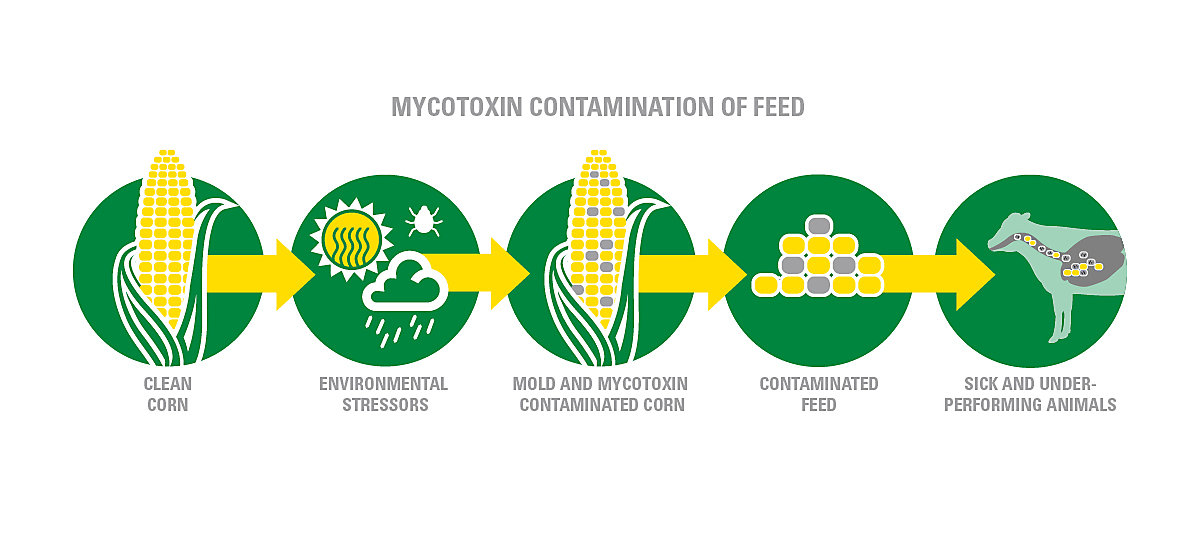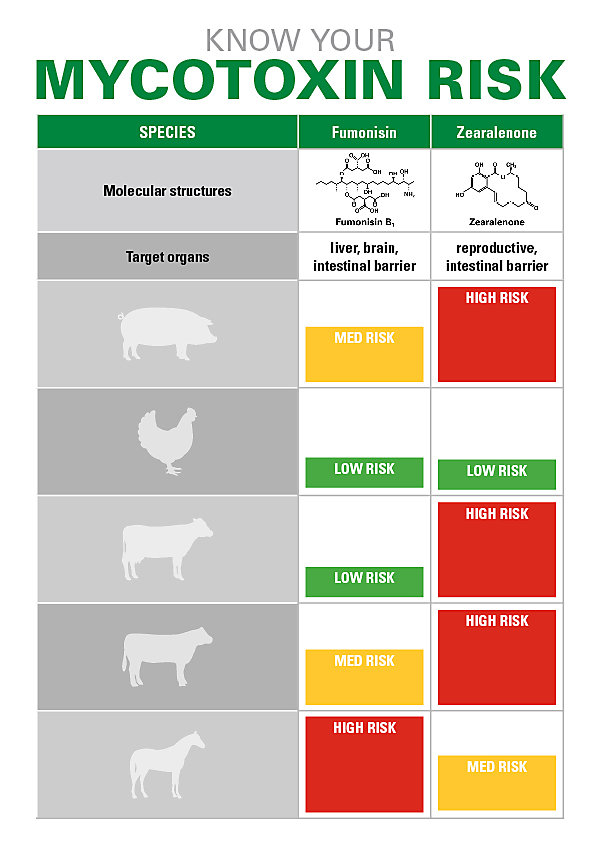Though much remains to be learned about what happens when two toxins affect an animal at the same time, researchers have determined that when zearalenone and fumonisin affect an animal in high doses alongside DON, there is a synergistic effect, meaning they have common symptoms that lead to more acute and severe damage than when infecting an animal alone. See more about concurrent infections here.
Mycotoxin Solutions
Given the need for additional research regarding synergistic and antagonistic relationships between mycotoxins and the variability in symptoms and their severity when multiple mycotoxins infiltrate an animal’s internal systems, the most effective treatment is one that offers broad-spectrum control. Specific toxins may require different treatments depending on the severity and speed of their absorption and damage. “Although the mechanism that sequesters the toxins during treatment is more or less the same, binding mycotoxins is a contact sport. The binding efficiency will vary not only by the toxins but also by treatment,” said Mani. Considering the high probability of multiple toxin contamination, a treatment with broad-spectrum binding efficiency will provide producers the greatest return on investment. KALLSIL™ – an enhanced zeolite mineral from Kemin – has been shown to impact multiple secondary fungal metabolites, including zearalenone and fumonisin.
KALLSIL is a natural anti-caking aid that improves feed ingredient flowability and reduces damage from secondary fungal metabolites. Zeolite is an aluminosilicate, a mineral compound in which some of its silicon ions have been replaced by aluminum. The linkages between ions in zeolite yield crystalline structures with openings, or cavities, that enable molecules to physically bind with harmful metabolites. As shown in vitro, the result is a strong total binding efficiency of enhanced zeolite for more than 55% for fumonisin and 34% for zearalenone.1
The enhanced zeolite in KALLSIL is unique in its broad-spectrum efficacy at low inclusion levels compared to similar products. Though it’s effective for fumonisin and zearalenone — and may help prevent the two from inflicting more serious synergistic damage in infected animals — enhanced zeolite has also been shown to reduce damage from other common metabolites, such as aflatoxin and T-2 toxin. KALLSIL is added to a feed ration at a rate of 2-4 ounces per head per day in cattle and 2-4 pounds per ton of swine or poultry feed.
“What many people don’t yet understand is the chronic element, the continuous exposure to mycotoxins,” Mani said. “Even if you continue to feed grain that has toxin levels below the damage threshold, the animals will develop chronic illnesses because of the interaction between multiple mycotoxins. This is very important to livestock producers because while these toxins aren’t necessarily killing animals, they are among the biggest factors in terms of losing money from animal performance.”
Learn more about how KALLSIL can help promote efficiency and performance by reducing the impact of fungal metabolites.
References
1KALLSIL™: An Enhanced Zeolite Flow Agent, MC-19-17358.




